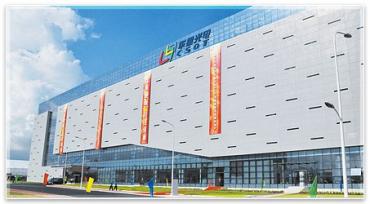China-based display maker CSoT demonstrated several new OLED display prototypes and technologies at SID 2019, and this great new video shows these displays in action.
First up is a 31" 4K (3840 x 2160, 144 PPI) AMOLED that was produced using an ink-jet printing process on an IGZO substrate. The peak brightness is 200 nits and the refresh rate is 120 Hz. This seems to be the same panel announced in March 2018 by Joshua Printing Display Technology (established by CSoT and Tianma in 2016). The display has some noticable defects.
Second up is a glass-free 3D (parallax barrier) transparent OLED. This panel is a 31" 1920x1080 (FHD) panel that features a 60Hz refresh rate and a brightness of 100 nits. The transparency is only 20%.
The third OLED is a 6.6" 384x300 IGZO panel that uses perovskite quantum dots as a color conversion film (in this case to convert blue OLED materials to green color). CSoT terms this as PE-OLED, this is actually a QD-OLED display that uses perovskite quantum dots. Perovskites offer a simple synthesis combined with high luminescent efficiency and tunable wavelenghts, and this is certainly an interesting technology to watch. This is obviously a very early prototype.
CSoT demonstrated a similar display with the same specification, but one that uses normal QDs.
We already reported on this display last month. CSoT also showcased a 7.2" 2048x1536 350 nits foldable (bending radius 3R) foldable AMOLED.
In the video you can also see CSoT's latest LCD, mini-LEDs, QD-enhanced LCDs and light-field technologies - and also a new 3.3" 232x116 transparent (45%) Micro-LED on an IGZO backplane.
In May 2019 CSoT announced that its 6-Gen LTPS flexible AMOLED production line in Wuhan has commenced operation. The company already achieved some design wins with "top-class" phone makers and is expected to start shipping OLED displays to its customers in Q4 2019. CSoT's production line in Wuhan will have a production capacity of 45,000 6-Gen substrates.


